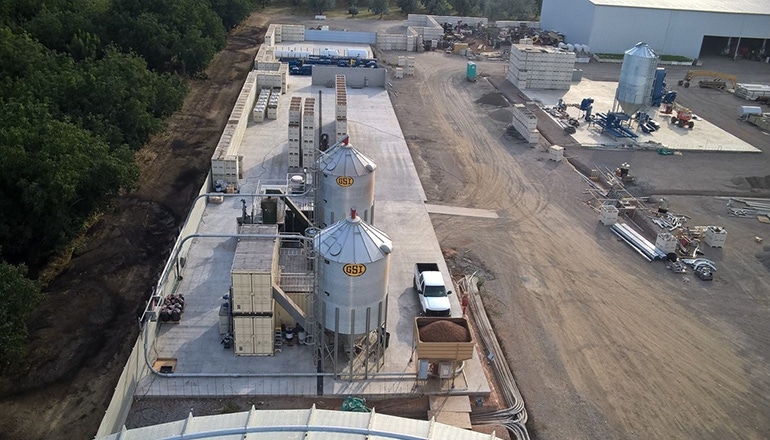SynTech’s Clean Syngas Technology Comes to Oahu, Hawaii
SynTech Bioenergy is partnering with Waste Resource Technologies to help the company cut tip fees and create renewable energy.

SynTech Bioenergy is partnering with Waste Resource Technologies (WRT) to help the hauler cut tip fees in Hawaii—now soaring at about $96 a ton—while enabling the company to make electricity and other renewable products.
WRT has purchased and will operate SynTech’s BioMax system and receive revenues from the electricity it produces from the island’s yard and fruit waste and agricultural processes.
BioMax leverages extremely high heat (900 degrees Celsius) in very low oxygen levels to make a clean syngas. The process also generates two useful byproducts: heat with industrial applications and biochar; the latter is primarily for agriculture applications, though biochar may have other uses down the road.
“This is a behind-the-meter project, meaning we provide power and heat to customers who pay us opposed to us exporting that power for sale to the local utility,” says Wayne McFarland, founder and CEO of SynTech Bioenergy. It’s cheaper than utility rates, he and some of his customers say.
“This project is a kickoff with one of our customers [in Oahu] that we hope is the first of many,” says Robert Webber, chief financial officer and executive vice president of business development at WRT.
“We have residential and commercial customers who produce a lot of organic waste, which is common in Hawaii,” he says, adding if BioMax performs as it has in other places, the technology will offset WRT’s costs, while enabling diversion of 1,300 tons of waste per year and cutting up to 8,000 tons of carbon.
Webber and colleague Clint Knox, WRT’s executive vice president of development and technology, believe they are in the right place to capitalize on this investment.
“We have worked on waste conversion in Hawaii for over 10 years, and they are pushing for this type of technology. [The state] has limited landfill space, high tip fees, high energy costs and renewable energy and diversion policies,” says Knox.
Waste is collected and processed either at a customer’s site or delivered to a central processing point. It’s ground, dried and densified into pellets of refuse-derived fuel or a higher-energy, more processed solid recovered fuel. The pellet is then converted in a reactor into clean syngas and biochar.
SynTech currently owns and operates two projects in California and one in Japan. Five more projects are under contract in California for export to Pacific Gas and Electric Company and eight more are in early development in California, either behind the meter or for export. SynTech also has five projects in permitting stages in Japan and will commission a project in China this summer.
Existing and pipeline customers range from producers of agriculture and wood waste to utility companies, military bases and large institutions like universities and medical centers.
Among key sells, says McFarland, is that BioMax is a scalable platform requiring a small footprint. It doesn’t use water and has virtually zero emissions because the system is completely contained.
The first system was delivered to the U.S. Department of Energy’s National Renewable Energy Lab (NREL) in 1999. Since then, BioMax has incrementally gone from 1.5 kilowatts (kW) to 5 kW, and SynTech most recently proposed an 8-megawatt system to a European utility.
The first commercial project was launched in 2007 at Dixon Ridge Farms, a large operation in Winters, Calif., that grows and harvests organic walnuts.
“Our motivation was to become energy self-sufficient by 2012 using renewable energy, and we achieved that,” says Russ Lester, co-owner of Dixon Ridge Farms.
The first 50-kW capacity system has since been replaced and produces five times the electricity to satisfy all of Dixon Ridge’s processing power needs. Byproduct hot water and heat are used to dry the walnuts. The biochar that comes from the process serves as a soil amendment.
“We were hearing from naysayers in various industries that renewable was not very reliable and was expensive. We found that to not be true. We produce less expensive energy than what we pay the utility,” says Lester, adding the technology has enabled Dixon Ridge to become carbon negative, pulling more carbon from the atmosphere than it produces.
McFarland is excited about potential for the biochar. While it’s been validated as soil amendment, predictive modeling has since indicated it can be used as activated carbon as a filtration medium. It also appears useful as carbon black (largely as a reinforcer in tires and as a conducting agent in varied applications) and to produce graphite (used in pencils, lubricants and electronics).
“We’ve also done predictive modeling on converting biochar to graphene, a natural occurring element. Graphene has highly conductive properties, is light weight and high strength, so it has multiple applications from aircraft frames to lighter-weight, longer-storage batteries,” he says.
Regarding overall application and future plans, McFarland says, “We are continually striving to improve feedstock handling, storage and flow as well as reactor performance across a wide range of feedstocks.”
As far as WRT’s forward focus goes, first the company intends to demonstrate in central Oahu that BioMax is a true sustainable way to manage waste. “Then,” says Webber, “we plan to incorporate it into a number of locations and applications throughout the island.”
About the Author
You May Also Like




